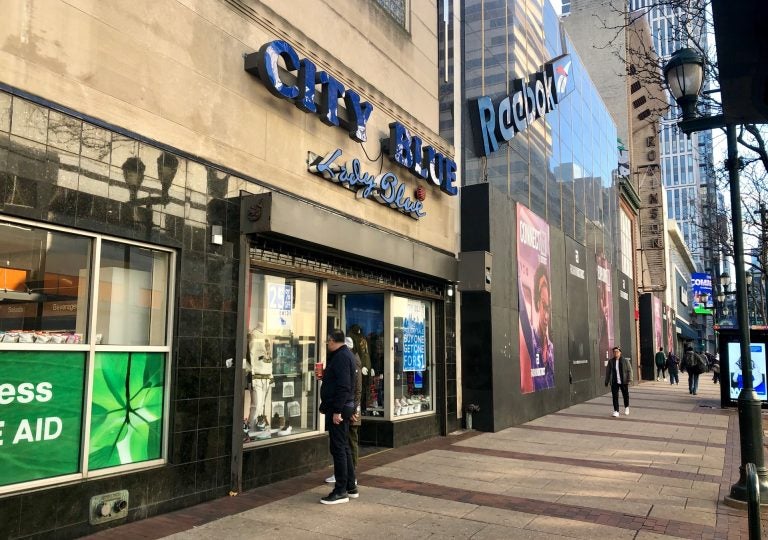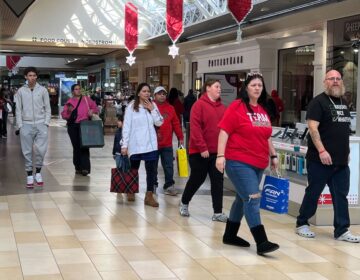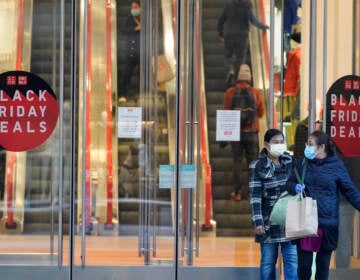Brick-and-mortar stores still viable with Philly shoppers
That phenomenon of watching customers check items out in person, only to order them online is a serious challenge for retailers, and it has fed some shake-ups in the industry.

Shoppers gaze into the window of City Blue in Center City Philadelphia (Darryl C. Murphy/WHYY).
Jessie Bulger, 22, will be among the millions upon millions doing holiday shopping over the next few weeks, searching for gifts for her loved ones. But she says she’ll be mostly skipping the lines and crowds, and stick to websites for her shopping needs.
“I just don’t feel like going out,” she said. “I feel like I could be doing more fun things with my time. I could either be reading, or going to a concert, or other things.”
This year’s Black Friday kick-off to the holiday shopping season saw $6.2 billion in sales from online purchases, according to a report from Adobe Analytics. That’s about 24 percent more than last year.
But as Bulger and her ilk take to the internet for most of their holiday shopping, brick-and-mortar stores still have advantages. In 2017, retail analysts said brick-and-mortar stores still account for the majority of holiday sales, although the number of online sales is on the rise.
Chris Reese, 29, of Old City, says he’ll be among those shopping online and in-store.
“I like to go take a look at it in person, and hold it and play with it and see what the deal is,” he said. “Sometimes, I’ll look at in person then go buy it online if it is cheaper.”
That phenomenon of watching customers check items out in person, only to order them online is a serious challenge for retailers, and it has fed some shake-ups in the industry.
This year has seen significant closures and downsizing from large-scale retailers such as Sears, Toys-R-Us, and Bon-Ton, leaving people out of work, and massive retail spaces vacant.
Jeanette Ford, of South Jersey, says she staunchly prefers the in-store experience. She calls it a shame some stores are going out of business.
Ford, 70, says visiting stores to shop are a way to “get out of the house” and “take in the sights.”
“What you see on the internet is completely different sometimes from what you receive,” she said. “And the stores are decorated for Christmas. It helps to boost the holiday spirit.”
Azyaha Williams, a sales assistant at City Blue, a local footwear and apparel chain on Market Street, says items and deals unavailable online help keep up foot traffic in the store.
Online orders also tend to take a bit longer to be delivered during peak times, making shopping in stores a better option for some.
After surveying more than 7,300 adult consumers, the National Retail Federation predicts 55 percent of shoppers will buy online, as well as at a department store this holiday season. Fifty-one percent will shop at discount stores, 44 percent will grab gifts at grocery stores, 33 percent at clothing stores, and 24 percent to electronic stores.
The organization also predicts that the holiday shopping season will bring in about $720 billion in sales, an increase between four and five percent from last year’s $688 billion.
WHYY is your source for fact-based, in-depth journalism and information. As a nonprofit organization, we rely on financial support from readers like you. Please give today.





